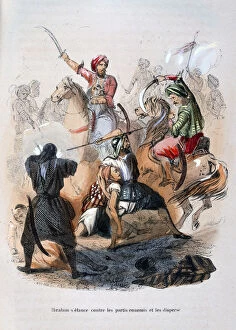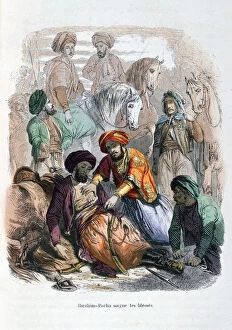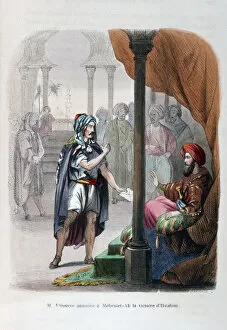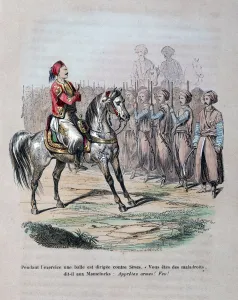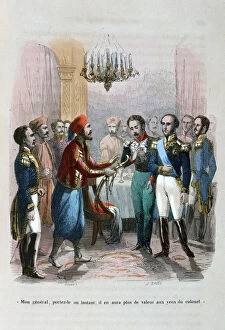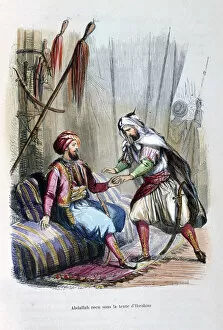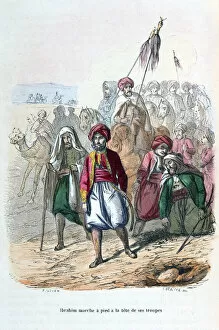Jean Adolphe Collection
Jean Adolphe Beauce, a talented artist of the 19th century, captured historical events and moments with his brushstrokes
All Professionally Made to Order for Quick Shipping
Jean Adolphe Beauce, a talented artist of the 19th century, captured historical events and moments with his brushstrokes. In his painting "Battle of Nezib, " he transports us to the year 1839 (1847), where we witness Ibrahim Pasha valiantly fighting against the Wahabis in Saudi Arabia. The intensity and bravery depicted on canvas are awe-inspiring. Another masterpiece by Beauce is "Ibrahim Pasha Looking after the Wounded. " Here, he showcases not only the military prowess but also the compassion of Ibrahim Pasha as he tends to those injured in battle, and is a poignant reminder that even amidst chaos, humanity prevails. In "M Vaissiere announces the victory of Ibrahim Pasha to Mehmet Ali, " Beauce captures a momentous occasion in history. The triumphs achieved by Ibrahim Pasha are celebrated as news reaches Mehmet Ali, showcasing their strong bond and shared victories. Beauce's artistry extends beyond war scenes; it encompasses portraits too. In his painting "Suleiman Pasha, " he immortalizes this influential figure with great detail and precision. Suleiman's commanding presence emanates from every stroke of paint. One cannot overlook Beauce's ability to depict significant meetings between prominent figures like in "Meeting between Ibrahim Pacha and Colonel Faudoa. " This artwork transports us back to Egypt in 1828 when these two individuals came together for an important discussion that would shape history. "Military Review with Ibrahim Pacha" takes us to Champ de Mars in Paris during c1846 (1847). We witness an impressive display of military might under Ibrahim's command—a testament to his leadership skills showcased on foreign soil. Beauce also delves into political events such as "Mahomet Ali Arriving in Constantinople. " Through this piece, we witness Mahomet Ali's arrival at a crucial turning point—an event that would have far-reaching consequences for the region.


